The Corsair Carbide 600Q Case Review: Upside Down But Right On
by E. Fylladitakis on September 12, 2016 8:30 AM EST- Posted in
- Cases/Cooling/PSUs
- Corsair
- ATX
- E-ATX
The Exterior of the Corsair Carbide 600Q
Just as Corsair advertises, the design of the Carbide 600Q truly is minimalistic, with smooth flat surfaces, straight lines and sharp turns. The designer added metal sheets on the front and top panels, giving the Carbide 600Q a quality all-metal appearance. The frame of these panels however remains plastic.
Measuring 53.5 cm tall, 23.5 cm wide and 45.4 cm deep (21 × 9.25 × 17.9 in), its dimensions are similar to those of other high end ATX cases with 5.25” bays, except from its significantly shorter depth. The design of the Carbide 600Q brings the 5.25” devices away from the main system, allowing the design to be just as small as cases without 5.25” device support at all. It has a volume of 57.1 liters, which is almost the same as that of the BitFenix Pandora ATX, a case without any 5.25” drive cages, and only 15% greater than that of the Zalman Z9 Neo, a significantly narrower low-cost design. However, the Carbide 600Q weighs 10.2 kg when completely empty, which is rather heavy for a case of this size.
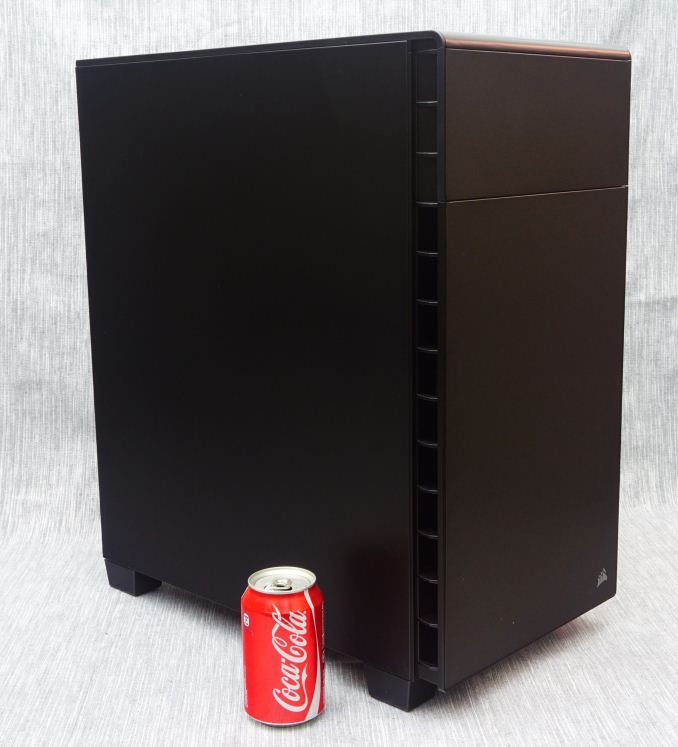 11.2 oz soda can added as a size reference.
11.2 oz soda can added as a size reference.
The metallic surfaces of the Carbide 600Q are very smooth, sprayed with a satin black paint that is highly resistant to fingerprints. A small door on the front panel hides the two 5.25” device bays. It has a magnetic latch and opens to the left side of the case only. Corsair also offers the 600C, a similar case but with a windowed right side panel instead, sacrificing sound absorption and utility for aesthetics.
Corsair designed the Carbide 600Q with low-noise operation in mind. It is not by chance that the case has no openings at the front and top panels, as the designer made sure to force the sound to deflect before reaching the user. The side, top and front panels of the case have sound-absorbing material applied to them, effectively reducing the noise level of the system.
The front I/O ports and buttons can be found aligned across the left side of the top panel. A large square power on button can be seen towards the front of the array, followed by a simple 3-way fan controller switch, 3.5mm audio jacks near the center, two USB 3.0 ports, two USB 2.0 ports, and finally a small square reset button.
One look at the rear of the Carbide 600Q hints that the interior of the case will definitely be unusual. The motherboard’s I/O is located towards the bottom of the case and is facing the right panel. The exhaust cooling fan is located near the bottom of the case too, while the PSU compartment can be seen at the top. In short, the rear of the Carbide 600Q looks as if someone took a modern ATX case design and rolled it upside down.
The bottom of the case serves as its main air intake, requiring substantial clearance via four tall rectangular legs. A large nylon filters covers the entire intake, which can be removed by pulling it from the rear of the case. Considering the length of the filter, I worry that it will be a pain to remove with the case beneath a desk, or even on a desk if the desk sits against a wall. It would have been far more practical if the designer allowed the user to pull the filter off from the front of the case.


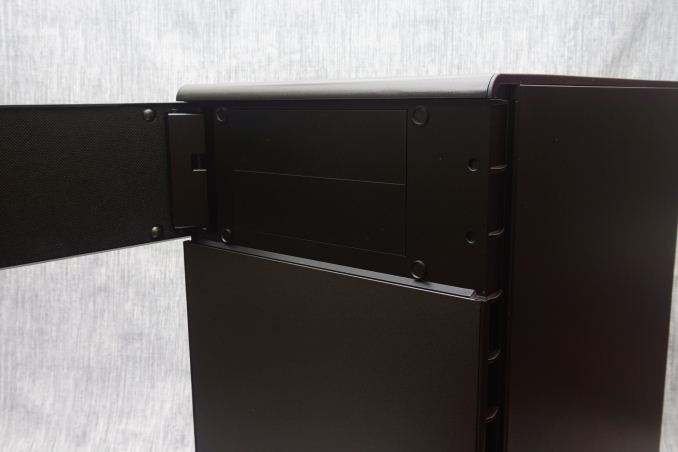
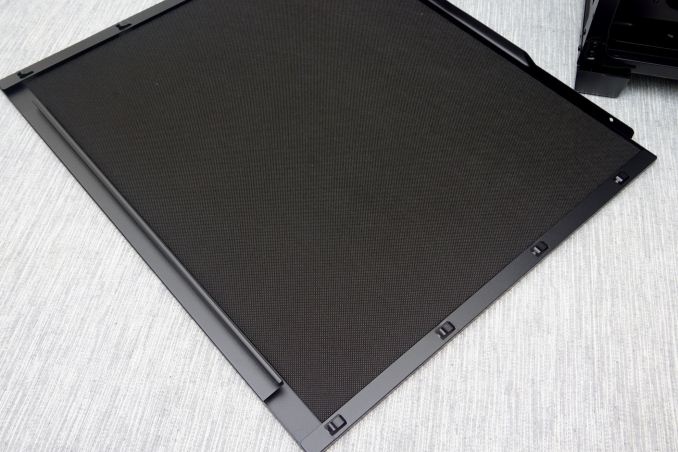
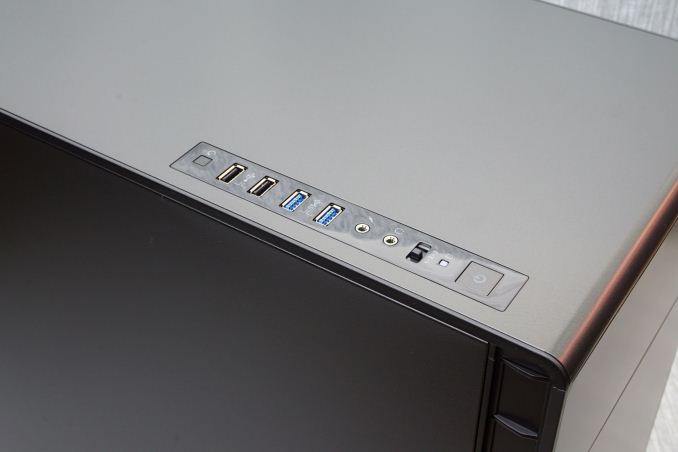
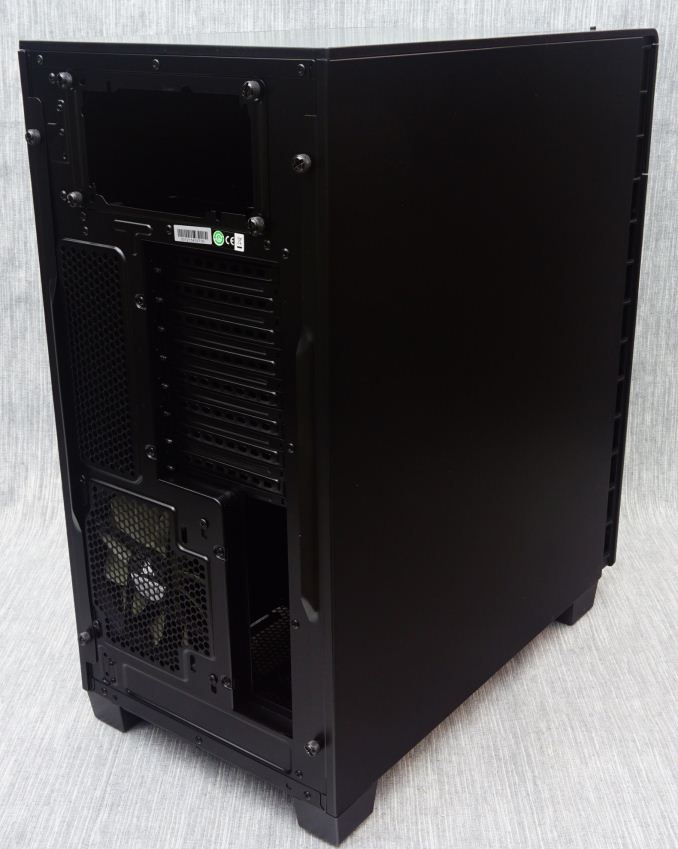
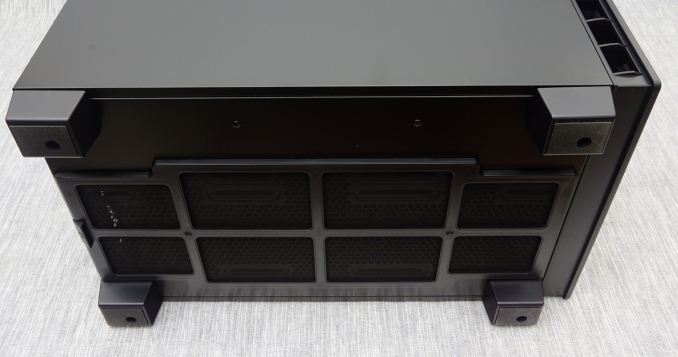








46 Comments
View All Comments
User.Name - Monday, September 12, 2016 - link
I'm not in the "I love my FT02" camp, but I do wish they would update the FT02 as well - or that their patent on 90° rotated motherboards would expire so that other manufacturers could use the design.• Despite the 180mm fan below them, that thing is a hot box for hard drives with an awful plastic mounting system, and there's no ventilation for the SSD mount. It can only hold five 3.5" drives too, which is not many for a case this size.
• If you have optical drives, they can interfere with the PCIe slots and would block airflow from the HDDs if there was any ventilation up there. (yes, I'm apparently a dinosaur now with my need for 2+ optical drives and many HDDs)
• It's a pain having to remove/install the top cover to access the cables. It should be a double-hinged "door" that can open from either side, which can optionally be removed.
• Cleaning the dust filters requires you to remove the top cover and the side panel to gain access. Dust filters should be removable from the front or the side of any case, so that you don't have to move it.
• Despite its huge exterior size (and weight), I actually found the case quite cramped and awkward to build in. Cable management seemed like an afterthought. Remember when high-end cases had removable motherboard trays?
I'm looking to build a new PC in the near future, and struggling to find a good alternative case though. With the size and weight of modern GPUs, I really don't like the idea of one of them hanging unsupported from a PCIe slot.
Azurael - Monday, September 12, 2016 - link
I prefer my PSU to be breathing cool air from outside the case. It's also one less variable to consider when trying to build a positive pressure set-up to minimise dust intake.Lolimaster - Tuesday, September 13, 2016 - link
Actually the PSU works with cooler temps at the bottom (heat goes from bottom to top, so in a top mounted setup, the PSU easy the heat from the mobo, cpu, hdd's and gpu)Spunjji - Tuesday, September 13, 2016 - link
The PSU moving to the bottom was a trend started by silence enthusiasts. You don't get all the warm air in the PC blowing through your PSU, which makes it run cooler and quieter and more efficiently. Having it at the top is a bad idea.seamonkey79 - Monday, September 12, 2016 - link
Read - "I'm young enough to computers to only remember bottom mounted cases."Icehawk - Monday, September 12, 2016 - link
Yup, it is only recently that PSUs are bottom mounted, it used to be a novelty.I have never seen a top mounted machine that was unstable so not really a concern.
IMO orientation all depends on what hardware you will be using.
I wish they would ditch 5" bays, I haven't populated one in 6+ years, they could make atx cases a good bit smaller then.
Ancillas - Monday, September 12, 2016 - link
I thought the same thing, until I put water cooling components into my mid-size. That's why the space is still there on so many cases, just with modular drive bays.If you're not doing water cooling, then yeah, free up that space!
Murloc - Tuesday, September 13, 2016 - link
I remember that even only 10 years ago bottom mounted PSUs weren't a given so how can that beDanNeely - Monday, September 12, 2016 - link
Isn't it amusing the way designs go full circle. Taking advantage of a top PSU + 5.25 bay section and not putting horizontal 3.5" HDDs in front of the mobo isn't new either. My parents circa 2000 Compaq mini tower did the same (although it put the HDD vertical against the front panel).OTOH I'm surprised it took as long as it did to go back to this orientation since it's the most compact way to support a second 5.25 bay for anyone who wants then (a single bay can share space with top fan mounts) while otherwise making the case compact front to back by removing the big HDD cages from the front.
Impulses - Monday, September 12, 2016 - link
Yeah... And this whole business of center of gravity - huh? Biggest selling point for bottom mounted PSU as I remember it originally was moving them away from the hottest component (CPU), but then that shifted to become the GPUs (at least under load)...Course this case doesn't really change that but still. The Silverstone TJ06 had an identical design to this, over ten years ago, when bottom mounted PSU were just starting to become trendy. Only deterrence was a larger top compartment with more bays.